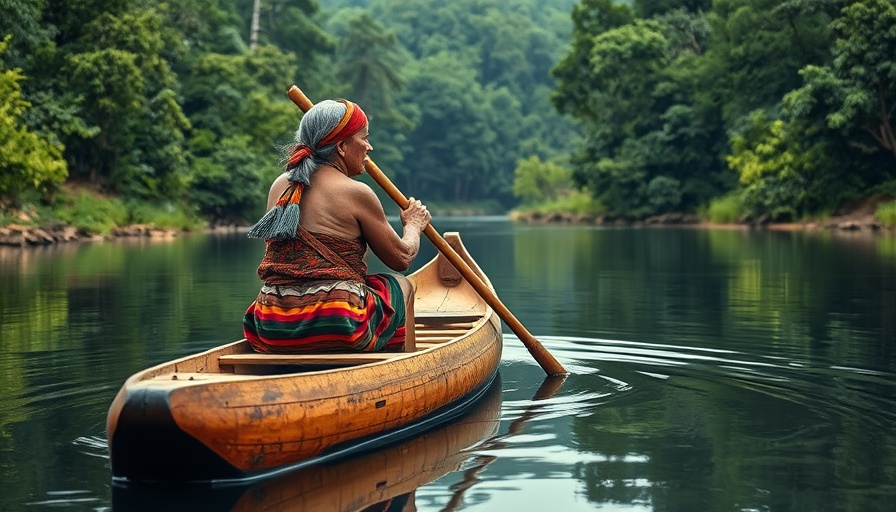
Indigenous Wisdom: A Powerful Tool for Forest Conservation
In a remarkable study led by scholars from McGill University, findings reveal that forest cover on Indigenous lands in Panama remains stable at nearly double the rate of government-protected areas. This surprising result underlines the pivotal role cultural values play in successful environmental stewardship. By understanding and integrating deeply-held beliefs about nature, Indigenous communities have cultivated an approach to land use that not only preserves biodiversity but guarantees its sustainability.
Why Do Indigenous Lands Thrive?
The research sheds light on the misconception that keeping people out of nature is the key to conservation. Instead, it suggests that active involvement through cultural respect and spiritual significance leads to effective ecosystem management. The authors discovered that deforestation and disturbance on these lands occur mainly along forest edges where agriculture takes place, demonstrating that Indigenous practices align with the preservation of forest integrity.
Mapping Cultural Values to Preserve Nature
Lead study author Camilo Alejo explains how participatory mapping sessions with Emberá community members highlighted the importance of areas used for farming, spiritual gatherings, and traditional practices. “These maps revealed that sacred sites and medicinal plant areas are essential to the community's identity and directly influence their interaction with the forest,” he points out. This connection between culture and conservation emphasizes that Indigenous people often view their land as a living entity requiring care and respect.
Rethinking Legal Frameworks for Land Ownership
Despite the effectiveness of these stewardship practices, many Indigenous communities remain dispossessed of formal land titles. In many legal systems, the requirement to exploit land for ownership undermines practices that promote ecological sustainability. “This creates a paradox,” Alejo notes. “Communities are incentivized to deforest, contradicting their longstanding stewardship traditions.”
Bridging Cultural Practices with Modern Conservation Efforts
Integrating traditional knowledge and modern conservation strategies presents an opportunity to foster sustainable agricultural practices. As more people shift towards ethical environmental practices, there’s a call for reformed land policies that recognize the value of Indigenous practices. By elevating the voices of Indigenous communities in the conversation about conservation, we can augment efforts to combat climate change while respecting their cultural heritage.
Conclusion: The Way Forward
Engaging Indigenous values in environmental conservation is not just good ethics; it is effective science. The evidence from Panama reminds us that cultural significance can drive sustainable practices. If policymakers embrace the urgent need to formally recognize land titles for Indigenous communities, there’s potential for a collaborative approach that respects cultural values while enhancing biodiversity preservation.
As more homebuyers and property investors recognize the importance of sustainable living, this perspective serves as a reminder: caring for our environment also means acknowledging the wisdom of those who have historically maintained its balance. Understanding these dynamics can influence decisions not only in land management but in how we choose to shape our communities as well.
 Add Row
Add Row  Add
Add 





 Add Row
Add Row  Add
Add 








Write A Comment